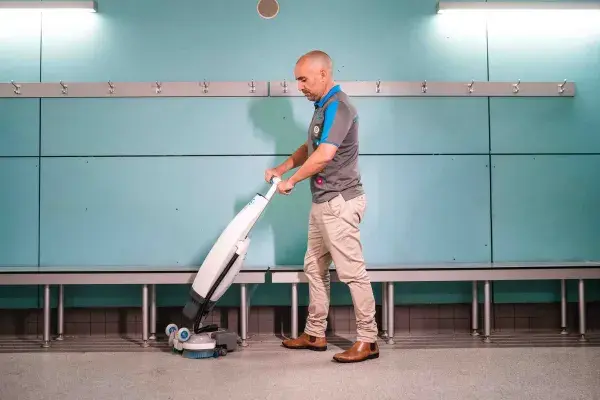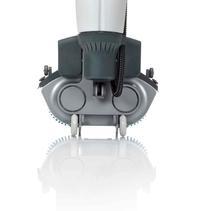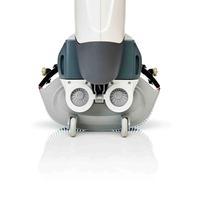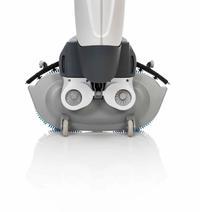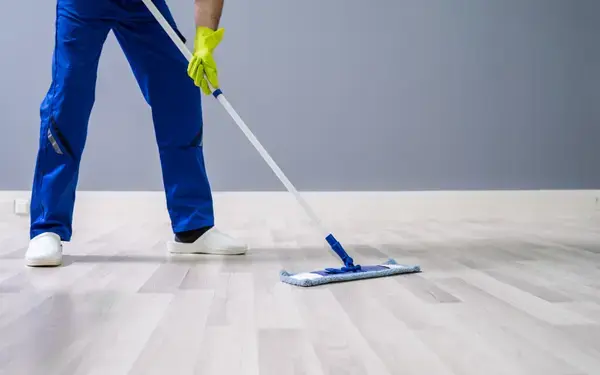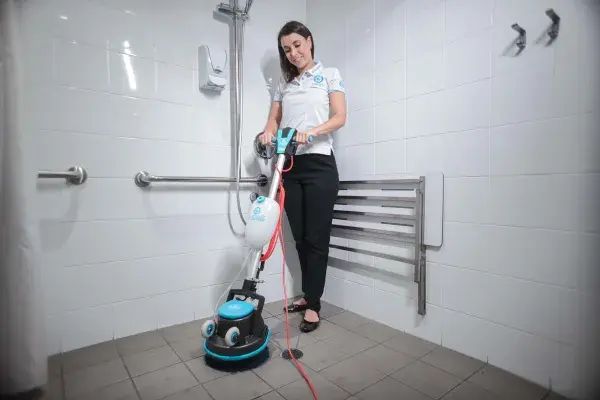You are reading: Understanding the Suction Power of Vacuum Cleaner, Voltage, RPM, Cleaning Power, and More
24 October 2023
6min read time
Brooke Payne
Understanding the Suction Power of Vacuum Cleaner, Voltage, RPM, Cleaning Power, and More
Share:

Key Insights
- When researching products to potentially purchase, it can be a confusing task.
- There are terms that can be hard to understand, and it can also be difficult to know what is an important factor to consider and why.
- So read on, and we are certain you'll gain some clarity surrounding some important key features, terms, words and specifications.
When researching products to potentially purchase, it can be a confusing task.
There are terms that can be hard to understand, and it can also be difficult to know what is an important factor to consider and why.
So read on, and we are certain you’ll gain some clarity surrounding some important key features, terms, words and specifications.
Cleaning is an integral part of our daily lives, whether we’re tidying up our homes, maintaining cleanliness in our offices, or tackling industrial-scale cleaning challenges. To ensure that each cleaning task is efficiently and effectively executed, choosing the right cleaning machine or tool is paramount. Understanding concepts like vacuum suction power, vacuum's suction force, air watt, and optimal airflow is essential for evaluating a vacuum's performance and cleaning ability.
Yet, the world of cleaning equipment can be confusing. During your equipment research, you’ll often encounter perplexing technical jargon and specifications that can leave you feeling overwhelmed and uncertain. Terms such as maximum suction, sustained suction, vacuum suction measured in air watts, pascals, or inches of water lift, and the importance of one or more filters, dust bag maintenance, and the role of a powerful motor or raw power in a vacuum's ability to lift deeply embedded dust and embedded dust from thick carpets or hard flooring are all crucial to understand. You may also come across references to vacuum models like robot vacuum, robot vacuums, cordless vacuum cleaner, stick vacuums, heavy vacuum, powerful vacuum cleaner, suction vacuum cleaner, and best cordless vacuum, each offering different levels of best suction power, cleaning ability, and suitability for household cleaning.
The aim of this article is to help you understand these essential cleaning terms and concepts that play a vital role in choosing a cleaning machine. So, keep reading and together we will unravel the meaning behind key terms such as suction power, voltage, RPM, cleaning power and more. This knowledge will help empower you to make informed choices, ensuring that the cleaning machine you choose aligns perfectly with your specific cleaning needs.
Why Understanding Suction Power and Cleaning Terms Matters
Before we dissect these essential cleaning terms, it's important to emphasize why understanding them is crucial. When you're in the industry or researching cleaning machines, knowing these terms can prevent costly mistakes. Without this knowledge, you might inadvertently purchase a machine that doesn't meet your cleaning requirements, leading to inefficiency, frustration, and potentially damaging results. A thorough understanding of these terms allows you to make informed decisions, choose the right machine, and ensure that your cleaning tasks are completed effectively and safely.
Key Vacuum Cleaner Terms You Need to Know About:
- Voltage
Voltage is a fundamental electrical term that measures the force or pressure of the electrical current. In the context of cleaning machines, it is essential to understand voltage because it determines the power supply of the equipment. Typically, cleaning machines can run on various voltages, such as 110V, 220V, or 240V. The voltage rating of your machine should match the electrical outlets available in your environment. Using a machine with an incompatible voltage can lead to safety hazards or operational issues. If you ever have any electrical questions, or you aren't sure if you have the right power supply always contact an electrician or a professional in this area to help.
- Suction Power
Suction power is a critical metric when it comes to vacuum cleaners, carpet cleaners, and similar devices. It measures the machine's ability to draw in dirt and debris from surfaces. Suction power typically provides you with a more accurate assessment of the machine's efficiency in cleaning. A higher suction power indicates that the machine can remove dirt and particles more effectively, making it essential for deep cleaning tasks.
- RPM (Revolutions Per Minute)
RPM, or revolutions per minute, is a term often associated with rotary machines, such as floor scrubbers and polishers. It indicates how fast the machine's brushes or pads rotate. The RPM directly influences the machine's cleaning effectiveness, as a higher RPM typically leads to better results. Faster rotations can remove dirt and stains more effectively, but it's crucial to balance speed with the type of surface being cleaned to prevent damage.
- Cleaning Power
Cleaning power is a comprehensive metric that considers various factors like suction power and RPM. It provides a holistic view of the machine's ability to clean effectively. Machines with high cleaning power are ideal for challenging cleaning tasks, while those with lower cleaning power may be suitable for routine maintenance.
But how do you work out the total cleaning power? The best way to calculate this is by multiplying the RPM and downward pressure, also known as the weight that sits on the brushes. For example, let's take the i-mop xl , which spins at 350 RPM and pushes down with a weight of 22.5 kilograms. When we multiply 350 by 22.5, we get a total cleaning power of 7875. That number tells us how strong and effective the cleaning machine is.
- Water Lift
Water lift is a measure of a vacuum cleaner's ability to lift water or other liquids from surfaces. It's especially important in wet and dry vacuum cleaners and carpet extractors. A higher water lift rating signifies that the machine can handle liquid spills and wet cleaning tasks efficiently. This term is crucial for those who need to clean both dry and wet messes.
- Motor Power
Motor power refers to the amount of electrical or mechanical power that a motor can generate. It is typically measured in units such as watts (W) or horsepower (HP). For instance, in vacuum cleaners, the motor power influences suction strength, while in floor scrubbers, it affects the rotational speed of brushes and overall cleaning performance. In general, a higher motor power usually leads to improved machine performance, but it also affects factors like energy consumption and machine size. The motor power should be appropriate for the intended application to achieve optimal results while balancing efficiency and energy consumption.
- Noise Level
Noise level, often measured in decibels (dB), refers to the intensity of sound or noise produced by a machine, device, or environment. It is a crucial consideration when evaluating and comparing various equipment, appliances, or settings, as it can impact comfort, safety, and overall user experience.
In the context of cleaning machines, such as vacuum cleaners, floor scrubbers, or pressure washers, noise level is an important factor. A lower noise level indicates that the machine operates more quietly, which can be beneficial in environments where reduced noise is preferred, such as homes, offices, or healthcare facilities. Conversely, industrial settings may tolerate higher noise levels, but efforts are often made to minimize noise to protect the hearing and well-being of workers.
- Filtration
Filtration is a fundamental process employed to remove solid particles or particulate matter from fluids or gases, such as air, water, or gas streams. Different filtration techniques and technologies are used to achieve this, each designed to cater to specific particle sizes and applications. Among these, HEPA (High Efficiency Particulate Air) filtration stands out as a widely recognized and effective method for capturing very fine particles, including dust, allergens, and microorganisms.
In an office or workplace, a comfortable noise level often falls in the range of 45-60 dB, depending on the nature of the work and individual preferences.
You can read our full article on filtration here .
- MERV Rating
MERV, short for Minimum Efficiency Reporting Value, is a rating system for air filters. It assigns a numerical value from 1 to 20 to assess how effective a filter is at removing airborne particles. Higher MERV ratings indicate better filtration efficiency, especially for capturing smaller particles.
Here's a concise breakdown of MERV ratings:
- Low MERV (1-4): Basic filters for residential systems, but less effective for particle removal.
- Medium MERV (5-13): Suitable for residential and commercial HVAC systems, providing good filtration for common particles.
- High MERV (14-20): Excellent filtration for specialized environments like hospitals and cleanrooms, capturing very small particles.
Take a look at the i-air Pro Air Purifier which has a MERV rating of 19.
- Downward Cleaning Pressure
"Downward cleaning pressure" refers to the force or pressure applied in a vertical, or downward, direction during a cleaning or scrubbing process. This pressure is commonly used in the context of various cleaning equipment, such as floor scrubbers, carpet cleaners, and pressure washers.
More downward pressure isn't necessarily better in all situations; it must be balanced to achieve the best results depending on the type of flooring and the level of soiling.
- Airflow
Airflow in cleaning machines, especially in vacuum cleaners, is a critical factor that directly affects their cleaning efficiency. It refers to the volume of air that the vacuum can move or suck in during operation. Understanding and optimizing airflow is essential for ensuring that a vacuum cleaner effectively picks up dirt, dust, and debris from floors and surfaces.
- Theoretical Cleaning Performance
The term 'Theoretical Cleaning Performance,' signifies the estimated cleaning capacity of a product within a specific time frame. When considering the purchase of a product like the i-mop, this metric becomes crucial. It offers potential buyers insights into the machine's efficiency and ability to clean large areas quickly.
In essence, it helps users gauge how swiftly the product can address extensive floor spaces, which is particularly important for commercial or industrial settings with substantial floor areas to maintain. Understanding the theoretical cleaning performance aids in selecting a cleaning solution that aligns with the scale of cleaning tasks. Hence, when exploring cleaning equipment options, this factor plays a significant role, especially in the context of managing substantial cleaning requirements.
So, a ‘Theoretical Cleaning Performance’ of up to 1800m² ph means that the machine can in theory clean a space of up to 1800m² per hour. We talk about this in our specifications for the i-mop as an example.
- Brush pressure
In the context of cleaning, brush pressure refers to the force applied by the brushes of a cleaning machine, such as a floor scrubber, against the surface being cleaned. Its a measurement of how hard these brushes press down on the floor. Think of it as the weight or force exerted by the brushes onto the surface.
The importance of brush pressure lies in its direct impact on cleaning performance. If the pressure is too low, the brushes won't have enough force to effectively remove dirt, stains, and grime from the floor. On the other hand, if the pressure is too high, it can potentially damage the surface being cleaned or strain the machine's components.
The appropriate brush pressure is essential to ensure that the cleaning machine applies just the right amount of force to scrub away dirt without causing any harm. When purchasing a cleaning product, especially for commercial or industrial use, understanding and adjusting brush pressure correctly is a key factor in achieving the desired cleaning outcomes and preserving the condition of the cleaned surfaces.
Read: Top 5 features of i-mop that make it a perfect floor cleaning machine for schools.
- Scrub Width
"Scrub Width" refers to the measurement of the cleaning path covered by a floor-cleaning machine's brushes or scrubbing mechanism. It represents the width of the area the machine can clean in one pass, much like the width of a broom's sweep when cleaning a floor.
The scrub width is a crucial factor to consider when purchasing a cleaning machine, especially for larger and more demanding cleaning tasks. It directly affects the efficiency and speed of the cleaning process.
A wider scrub width means the machine can cover more ground in a single sweep. This is particularly valuable when dealing with substantial areas like large industrial floors, school hallways, or expansive commercial spaces. With a broader scrub width, the cleaning job is completed more quickly, which is not only time-efficient but also contributes to cost savings, as it reduces labor and machine operation time.
On the other hand, in smaller or more confined spaces, a narrower scrub width can provide better maneuverability and precision.
So, when selecting a cleaning product like a floor scrubber, understanding and choosing the right scrub width is critical to match the specific cleaning requirements, optimize productivity, and ensure effective and efficient cleaning operations.
- Dual-Action Orbital Technology
Dual-Action Orbital Technology is a cutting-edge cleaning technique designed to enhance the performance of cleaning equipment, such as ORBOT floor scrubbers . It involves the synchronized movement of cleaning brushes in two directions simultaneously—both spinning and moving back and forth. This dual-action approach significantly improves the cleaning process for several reasons:
Thorough Cleaning: With brushes that move in multiple directions, it ensures better coverage and a more thorough cleaning of the surface. The brushes can reach dirt, grime, and stains from various angles, leaving the surface cleaner and shinier.
Efficiency: This technology enables faster cleaning because it essentially performs two cleaning actions at once. It reduces the time and effort required to clean a given area, which is especially valuable for commercial and industrial cleaning applications.
Versatility: Dual-action orbital technology is effective on a wide range of floor surfaces, from hard floors to carpets, making it a versatile choice for professionals.
Take a look at the below video for more information on the ORBOT and Dual Orbital Technology.
Vacuum Cleaner Features
When it comes to choosing the right vacuum cleaner for your home or workspace, understanding the features that impact cleaning performance is essential. One of the most critical aspects to consider is suction power, which directly affects a vacuum cleaner’s ability to lift dirt, fine dust, and pet hair from a variety of surfaces. Suction power is often measured in air watts (AW), and for most cordless vacuums, a good suction power falls between 100 to 200 AW. For upright and canister vacuums, which are designed for more intensive cleaning tasks, the ideal suction power typically ranges from 180 to 300 AW. If your primary goal is deep cleaning carpets or tackling stubborn dirt, opting for a vacuum with higher suction power—above 200 AW—will deliver the best results. For hard floors or low-pile carpets, a lower suction power may be sufficient, ensuring efficient cleaning without unnecessary energy consumption.
Another key feature to look for in a vacuum cleaner is its filter system. A high-quality filter system, such as a HEPA filter, can capture up to 99.97% of particles as small as 0.3 microns. This is especially important for pet owners and allergy sufferers, as it helps trap allergens, pet dander, and fine dust, resulting in cleaner air and a healthier home environment. Some vacuum cleaners also offer advanced filter systems or multiple layers of filtration, further enhancing their ability to maintain optimal indoor air quality.
Beyond suction power and filtration, consider the vacuum cleaner’s design and additional features. Tool storage, crevice tools, and upholstery brushes can make it easier to clean hard-to-reach areas, furniture, and tight corners. Ergonomic design elements, such as a comfortable handle and lightweight construction, can reduce fatigue and make the cleaning process more enjoyable. For those seeking maximum convenience, cordless vacuum cleaners are a popular choice. Cordless vacuums offer greater flexibility and maneuverability, allowing you to clean without being tethered to a power outlet. When evaluating cordless models, pay attention to battery life—look for a vacuum that provides at least 30 minutes of runtime on a single charge—and power consumption, ideally under 20 watts for energy efficiency.
Some of the most popular vacuum cleaner models are known for their strong suction power, advanced filter systems, and user-friendly features. These upright and canister vacuums often include adjustable suction settings, allowing you to tailor the vacuum’s performance to different floor types and cleaning needs. However, it’s important to research and compare models, read customer reviews, and consider your specific requirements before making a purchase.
Maintenance is another important factor to keep in mind. The cost and frequency of replacing filters and dust bags can vary between vacuum cleaners. Some models require regular replacement of disposable dust bags and filters, while others feature washable filters and reusable dust bags, offering a more cost-effective and environmentally friendly solution.
Ultimately, the best vacuum cleaner for you will depend on your unique cleaning needs, preferences, and budget. By considering factors such as suction power, filter system, design, and maintenance requirements, you can find a vacuum cleaner that delivers good suction, effective cleaning, and lasting convenience. Whether you need a powerful upright vacuum for deep cleaning carpets or a lightweight cordless vacuum for quick cleanups on hard floors, there’s a vacuum cleaner out there designed to help you achieve a cleaner, healthier home.
Conclusion
In conclusion, choosing the right cleaning machine is not just about aesthetics or brand names; it's about understanding the technical specifications that define their performance. Whether it's voltage, suction power, RPM, cleaning power, water lift, or others that we have delved into, these terms hold the key to selecting the perfect tool for your cleaning needs.
By taking the time to read and understand these different meanings and terms, we hope you can make well-informed decisions about your preferred cleaning machine.
For more information or product support, click here .
You could be saving up to $6,094 per year.
Products Featured Inside this Article
Media and Insights
Join the movement that's changing what clean means.
Be part of a cleaner world. Get a live demo at a time that suits you.
Book a Demo